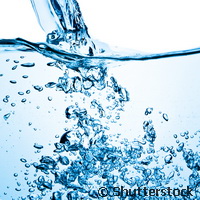Getting more from groundwater
By 2050, around 4 billion people will be living in countries with water shortages. Innovative techniques are urgently needed to squeeze every drop from the resources available, and a team of European scientists believes it has some of the answers. In many European countries, drinking water comes from groundwater - this is the case for more than 80 percent of tap water in Denmark, Austria, Iceland, Italy and Switzerland. Traditionally, the water is pumped up and then filtered - just as an aquarium is filtered - to remove iron, manganese and other impurities. The problem arises when these filters need cleaning. The process involves backwashing with water, during which up to 10 percent of potential drinking water can be lost - it is simply discharged afterwards as wastewater, explains André Reigersman, coordinator of the EU-funded project IWEC ('Increased water efficiency with ceramic membrane technology') and chief executive of Dutch SME RWB Water Services. IWEC aims to introduce ceramic membranes into the process, and hopes to show their feasibility at a demonstration plant in the Netherlands. "Using membranes could save up to two cubic kilometers of water every year, which is equal to the combined consumption of drinking water in the Netherlands and Sweden," says Reigersman. Alternatives to membrane types have been investigated. But the plastic versions, which are either operated with pressure or suction, do not necessarily remove all harmful bacteria as they are prone to breakage and are relatively expensive due to a lower life expectancy, higher energy input, chemical consumption and space requirements, and lower rates of water recovery. Once RWB Water Services had identified ceramic membranes as the way forward, they began testing them in 2009. The IWEC project, which also brings together a Dutch drinking water and Polish manufacturing company, began three years later. Manufacturing the membranes in Poland helps keep costs down. "We need to be innovative, and our solution will not be innovative if it more expensive," explains Reigersman. In addition to cost and health benefits, ceramic membranes have a lifespan of 15 to 25 years (compared to an average of 5 years for conventional filters). And once their filtering days are over, the membranes can also be recycled, for example in the manufacture of tiles. The team will look more in depth at the re-use of these membranes - a key element of IWEC - before the end of the project. It has been market barriers rather than technological challenges that have so far been the biggest stumbling block. In the Netherlands, a groundwater tax was in place - although this has now been lifted. EU countries have also not yet implemented common legislation on water re-use and testing methods. But the IWEC team remains very optimistic. "The start has been more difficult than expected, but we seem to have had some success in removing some market barriers," says Reigersman. Assuming the demonstration is successful, Reigersman hopes to make ceramic membranes the standard water re-use solution in the Netherlands, and will then turn his attention elsewhere. Some parts of Europe are off the agenda as water loss during distribution is already very high - in some cases up to 30 percent. "It makes no sense to invest in something to save 5 percent when losses are so high elsewhere," explains Reigersman. But other countries are certain to hear about IWEC's work soon. The team is already looking at the German market, and has made a market inventory covering several countries. The plan is to start in those countries where drinking water is still expensive, such as Denmark. The IWEC project is receiving over EUR 847 000 in funding from the EU through its eco-innovation programme. It is due to end in June 2015. For more information, please visit: IWEC http://www.iwec-water-reuse.eu/index.htm(opens in new window) Project factsheet
Countries
Netherlands, Poland



